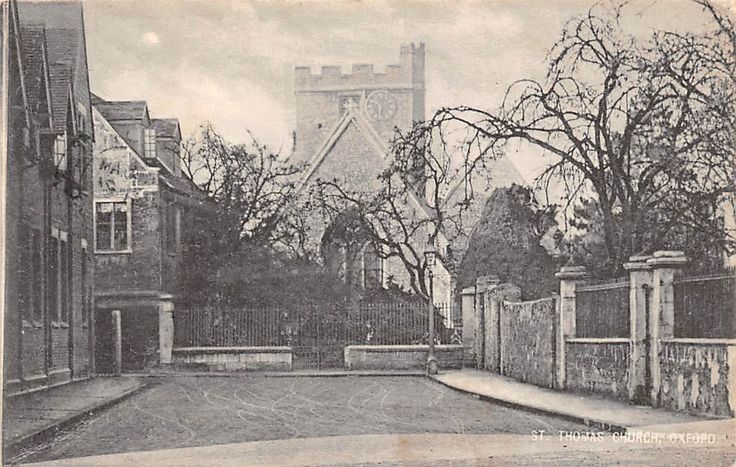St Thomas Church is the ancient parish church of central-west Oxford – its origins stretching back to the 11th Century. The history of the parish corresponds closely with the history of England, as evident with many significant events and figures overlapping each other.
The patron of the parish is St Thomas the Martyr – namely Thomas Becket, Archbishop of Canterbury in the late 12th Century. Becket was murdered in Canterbury Cathedral on 29th December 1170.
The church has served the people of the parish through many centuries of change, with the most recent changes being perhaps the construction of the Oxford Canal in 1790, and subsequently the railways and breweries in the mid-19th Century. Both the Great Western Railway and the Great Central Railway had stations in the parish, together with the Oxford Canal Basin, Frank Cooper’s Jam Factory (of Oxford Marmalade fame!), and the Hall’s and Morrell’s breweries.
By the mid-19th Century the parish was notoriously a place of disease and vice; the majority of cholera outbreaks in the city originated here. This chapter of the story of St Thomas coincides with the long incumbency of Fr Thomas Chamberlain, Vicar from 1852-1892.
Chamberlain was an austere, devout character who pioneered the standard for ‘Oxford Movement’ churches around the country, through a revival of prayer, liturgy, and the radical commitment to public service and education. His portrait hangs in the church to this day. One of the first convents of the 19th Century was founded at St Thomas; the Calvary gate remains standing to the south east of the church. Chamberlain also founded St Edward’s School, originally in New Inn Hall Street.
The parish underwent huge demographic change in the 1920s and 1930s, with the slum clearances and loss of much manufacturing, trade and industry in the following years. At the beginning of the 21st Century, change was once again afoot, with the redevelopment of much of the parish, including Frideswide Square.

